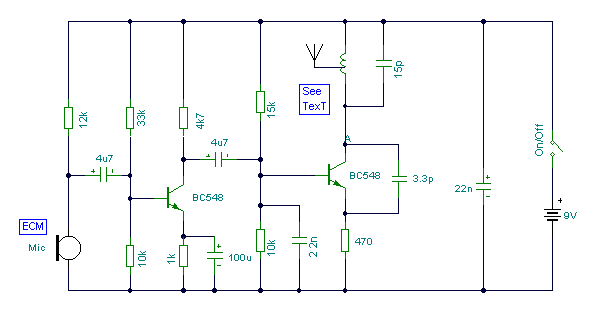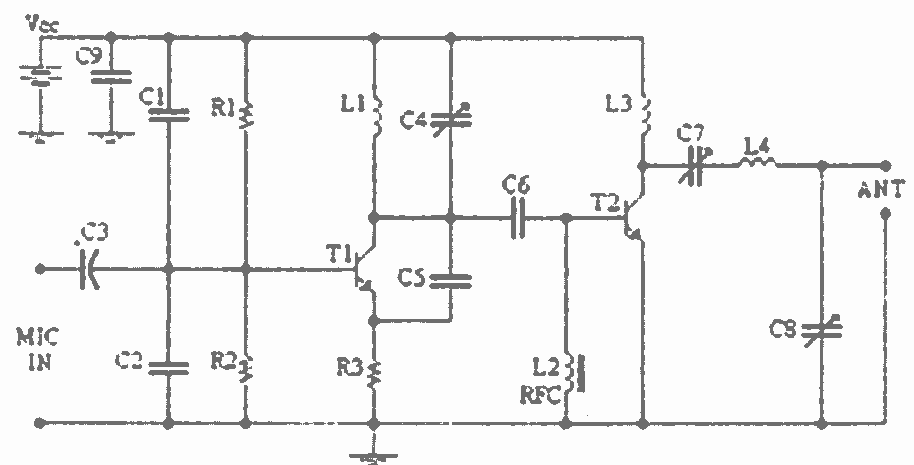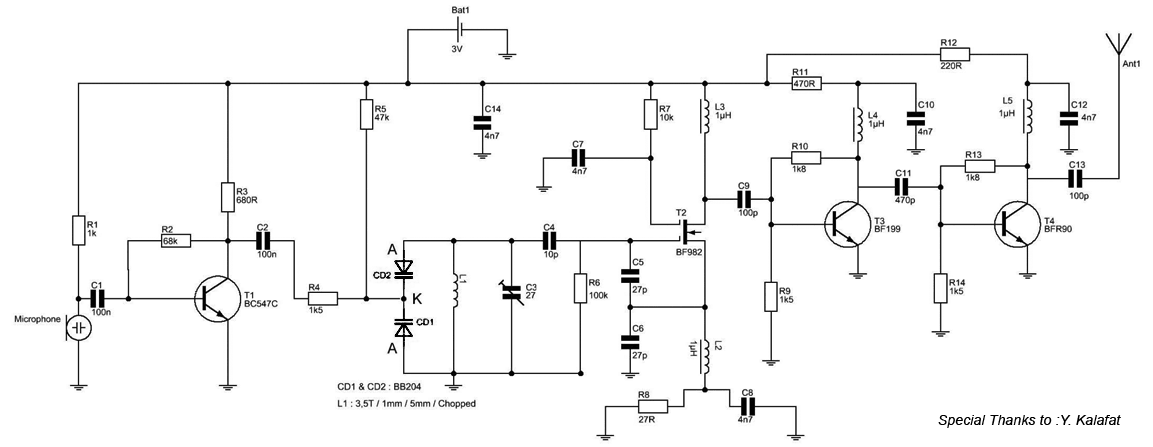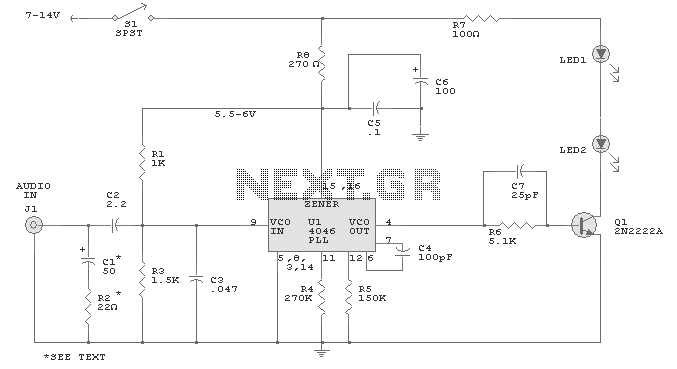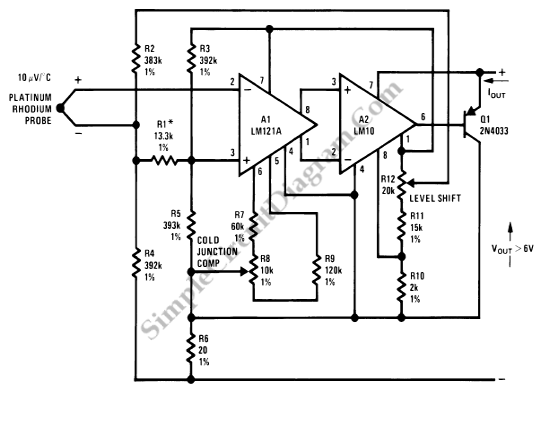
88-108MHz FM Transmitter
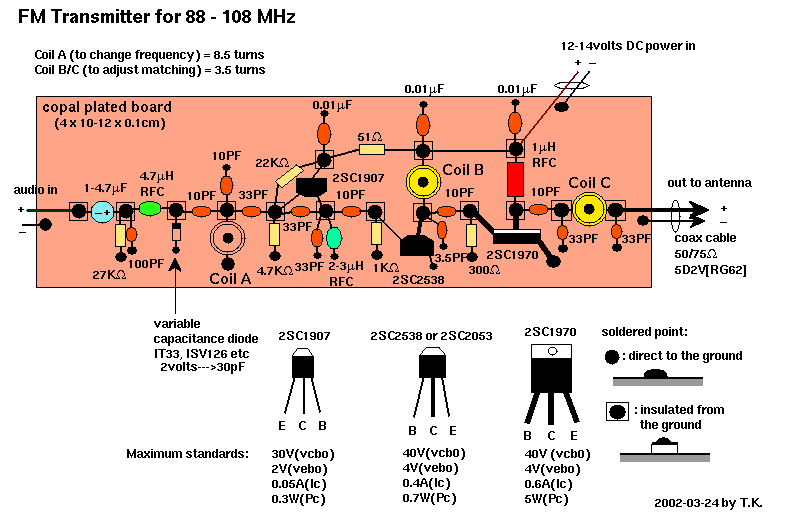
The following circuit illustrates an FM transmitter circuit diagram operating within the 88-108 MHz frequency range. Features include a 1W transmitter of the Tetsuo style. Components involved are capacitors, among others.
The FM transmitter circuit operates in the VHF band, specifically designed for frequencies between 88 MHz and 108 MHz, which is the standard FM broadcast band. The 1W output power indicates that this transmitter can be used for short-range broadcasting applications, making it suitable for hobbyists and educational projects.
The circuit typically includes several key components: an oscillator, modulator, amplifier, and various passive components such as capacitors and resistors. The oscillator generates the carrier wave at the desired frequency, while the modulator combines the audio input signal with the carrier wave, encoding the audio information onto the carrier for transmission.
Capacitors play a crucial role in filtering and tuning the circuit. They are used to stabilize the frequency of the oscillator and to couple signals between different stages of the transmitter. The choice of capacitor values affects the overall performance, including frequency stability and bandwidth.
The amplifier stage boosts the modulated signal to the required power level for transmission. It is important to ensure that the amplifier can handle the load presented by the antenna, which is typically a simple dipole or monopole design for FM transmission.
Overall, this FM transmitter circuit is a practical example of analog communication principles, allowing for the transmission of audio signals over a designated frequency band. Proper consideration of component selection and circuit layout is essential for achieving optimal performance and compliance with regulatory standards for RF transmission.The following circuit shows about 88-108MHz FM Transmitter Circuit Diagram. Features: 1W transmitter Tetsuo style. Component: Capacitor, .. 🔗 External reference
The FM transmitter circuit operates in the VHF band, specifically designed for frequencies between 88 MHz and 108 MHz, which is the standard FM broadcast band. The 1W output power indicates that this transmitter can be used for short-range broadcasting applications, making it suitable for hobbyists and educational projects.
The circuit typically includes several key components: an oscillator, modulator, amplifier, and various passive components such as capacitors and resistors. The oscillator generates the carrier wave at the desired frequency, while the modulator combines the audio input signal with the carrier wave, encoding the audio information onto the carrier for transmission.
Capacitors play a crucial role in filtering and tuning the circuit. They are used to stabilize the frequency of the oscillator and to couple signals between different stages of the transmitter. The choice of capacitor values affects the overall performance, including frequency stability and bandwidth.
The amplifier stage boosts the modulated signal to the required power level for transmission. It is important to ensure that the amplifier can handle the load presented by the antenna, which is typically a simple dipole or monopole design for FM transmission.
Overall, this FM transmitter circuit is a practical example of analog communication principles, allowing for the transmission of audio signals over a designated frequency band. Proper consideration of component selection and circuit layout is essential for achieving optimal performance and compliance with regulatory standards for RF transmission.The following circuit shows about 88-108MHz FM Transmitter Circuit Diagram. Features: 1W transmitter Tetsuo style. Component: Capacitor, .. 🔗 External reference
